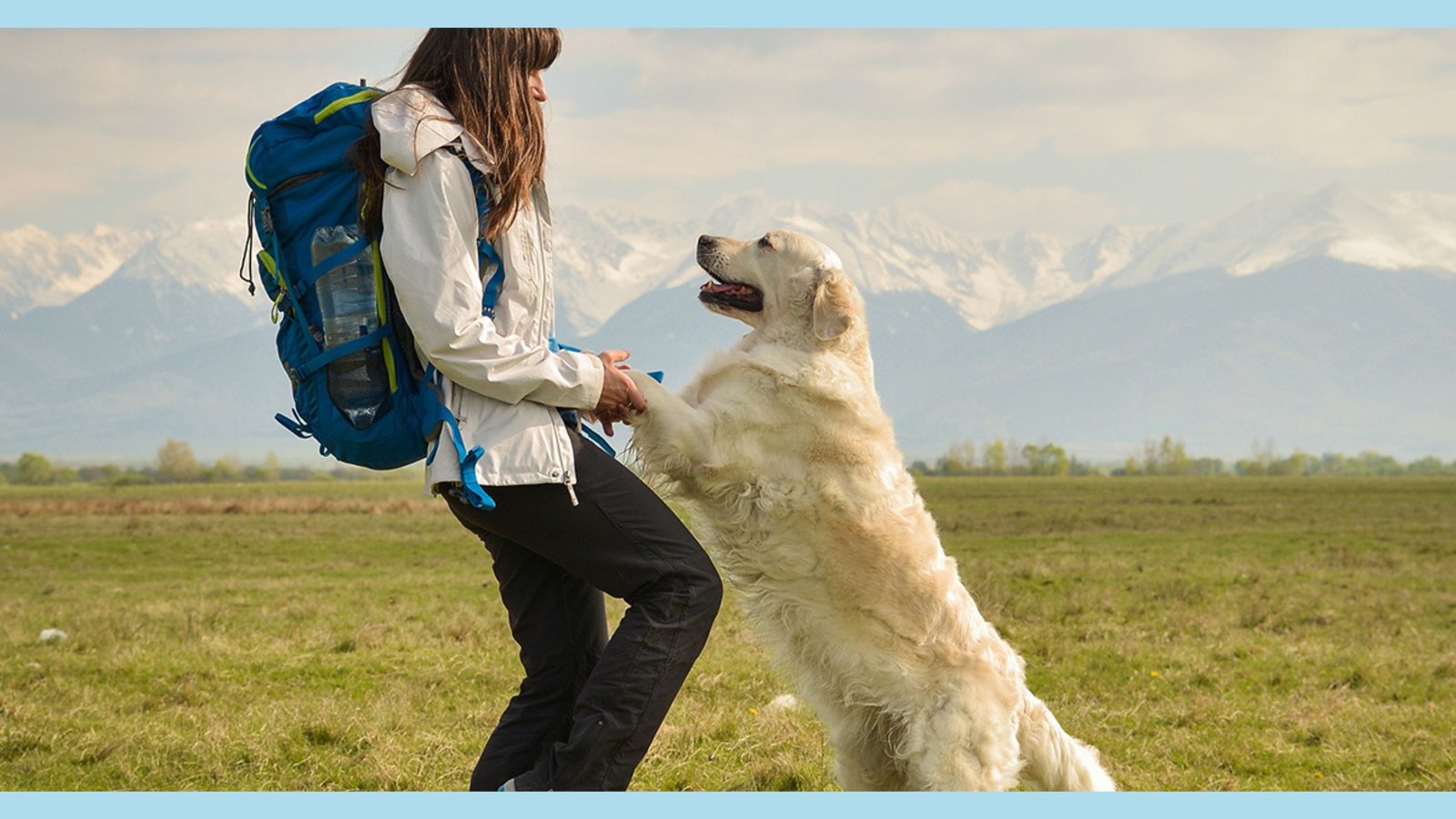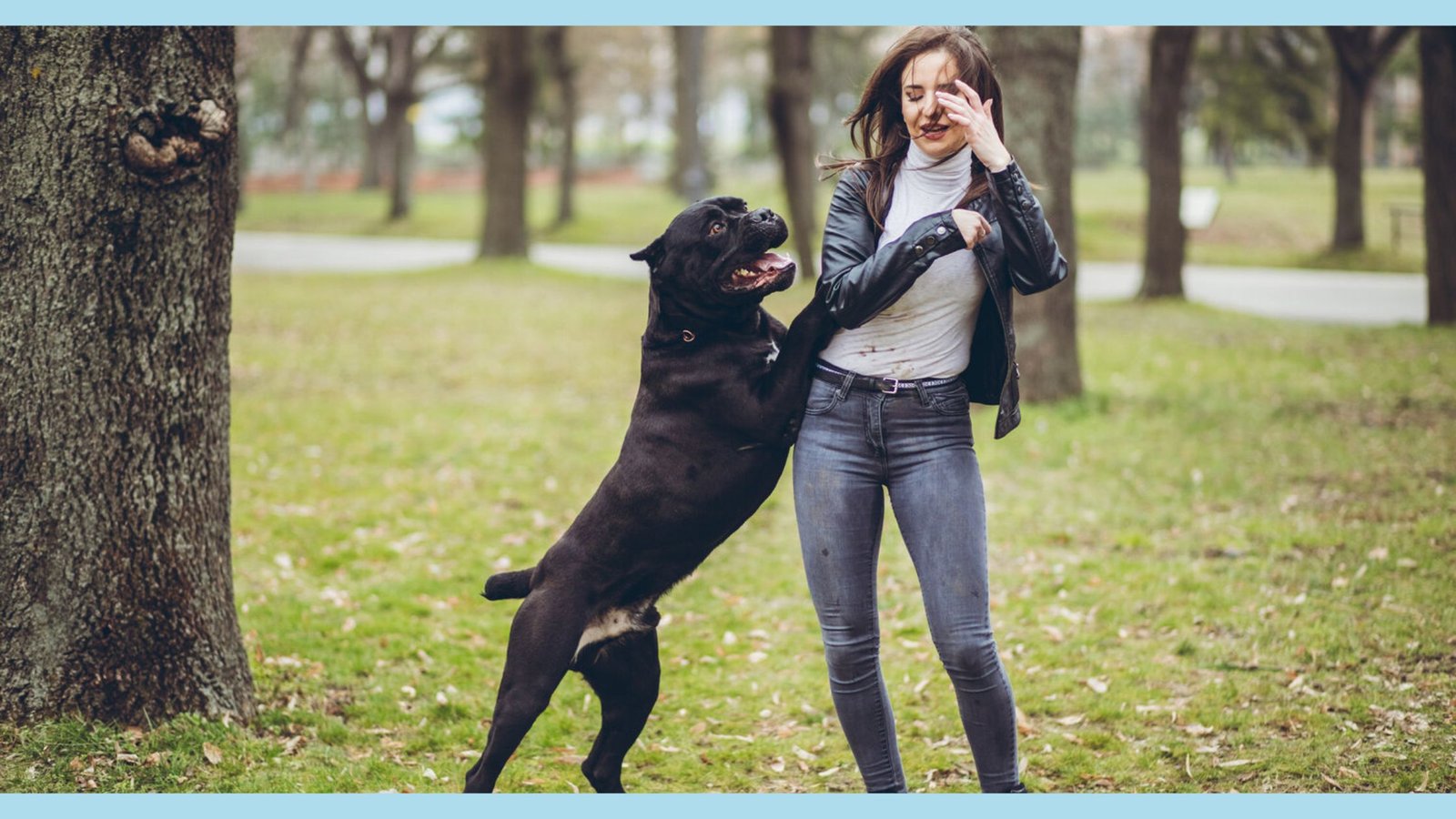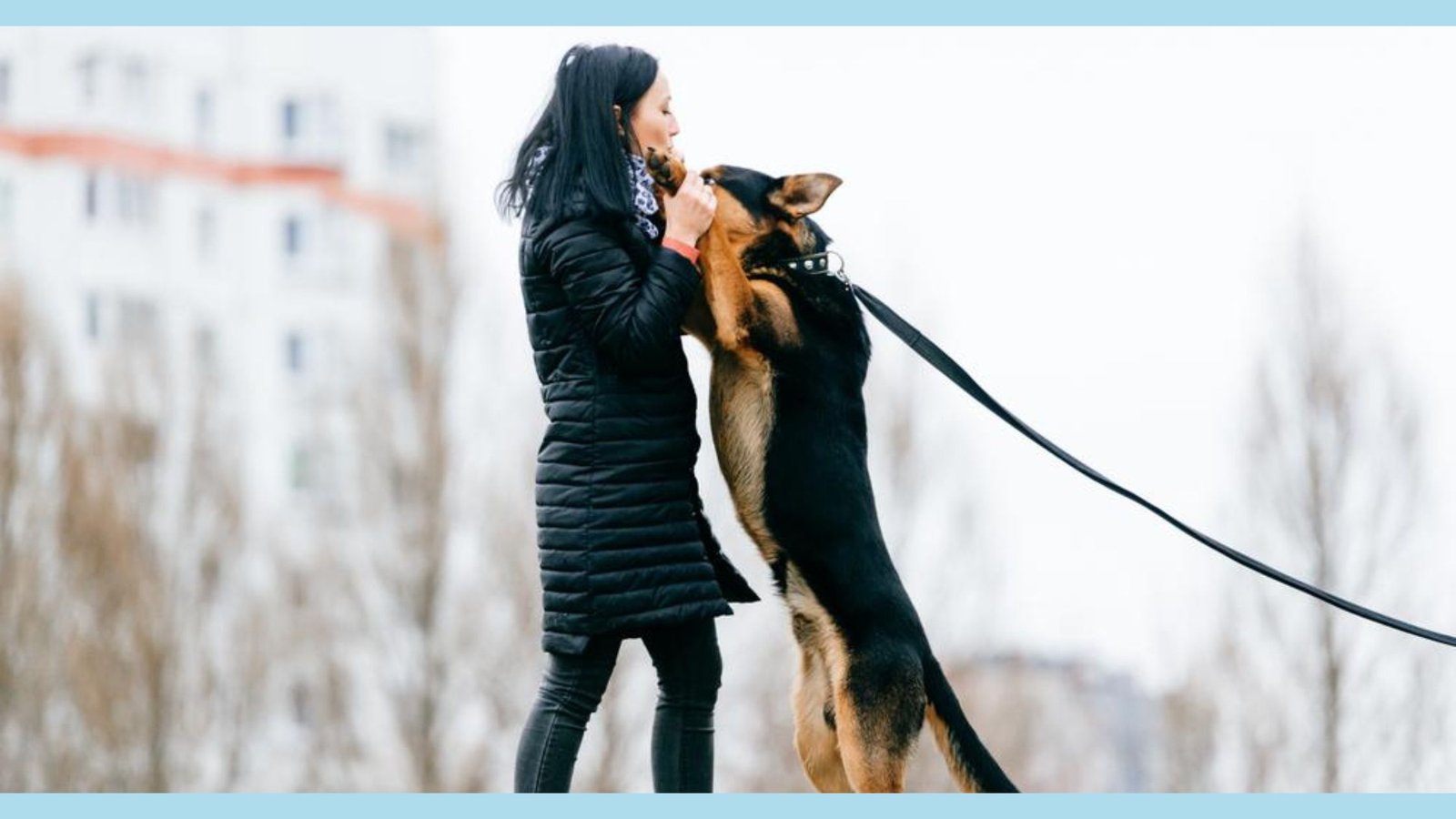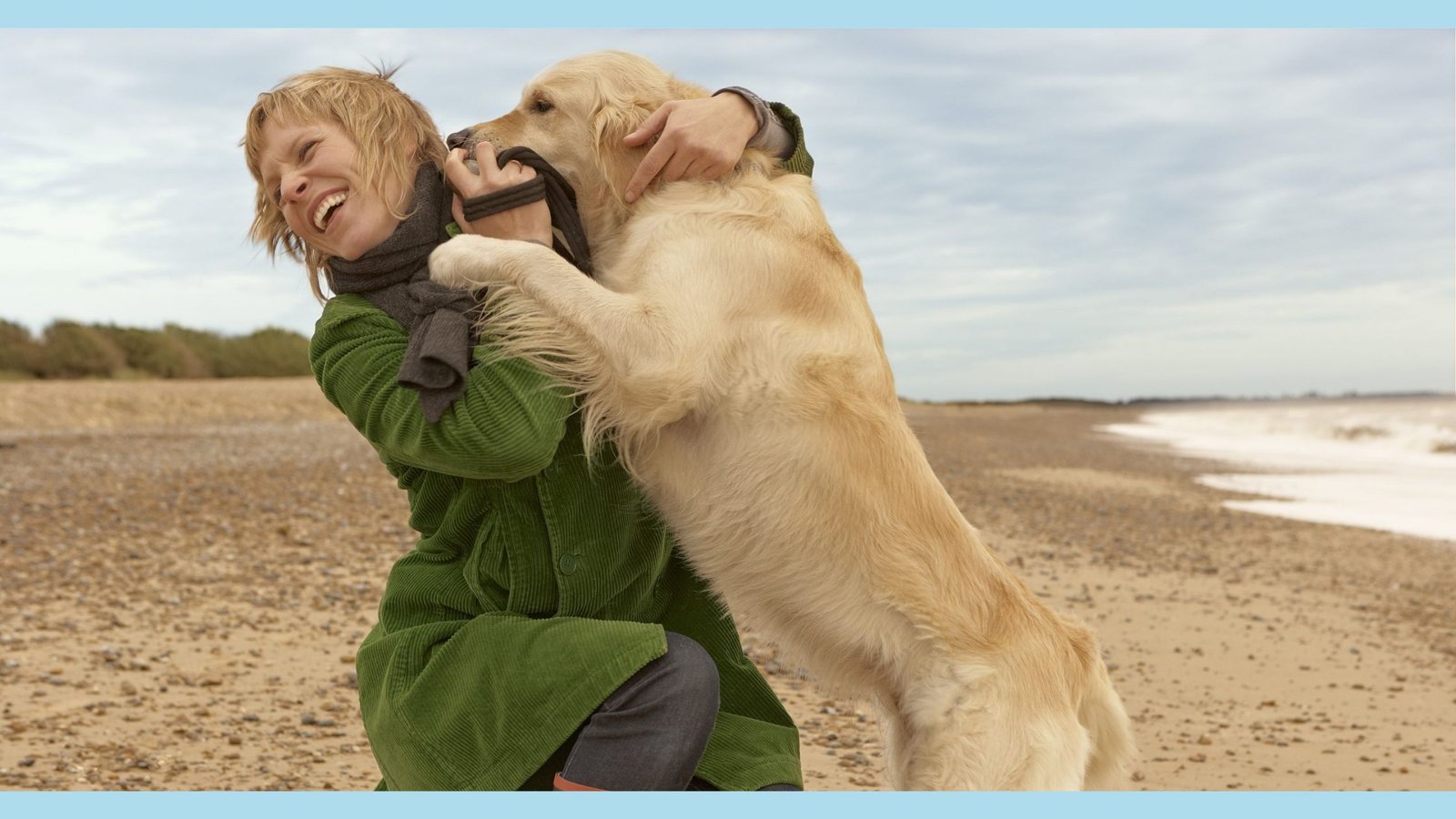
TO STOP YOUR DOG TO JUMP ON PEOPLE TEACH HIM GOOD MANNERS
Dogs often jump on people when excited. This can scare or upset some people. Punishing your dog isn’t helpful. You can train them not to jump up. This article explains how to stop your dog to jump on people.
Using a Leash will Stop Your Dog To Jump on People
Keep your dog on a leash when outside. Unless you’re in an off-leash area, use a secure leash and collar or harness. This stops them from jumping on people by keeping them close. Train your dog to walk calmly on the leash too.
A leash gives you control over your dog’s movements. You can easily stop them from approaching others. Make sure the leash is sturdy and the collar fits properly.
Dog Recall Training
Recall training teaches your dog to come when called. This helps you regain control, even off-leash. If your dog starts to jump on someone, you can call them back. Recall is an essential command for well-behaved dogs. Visit off-leash areas to practice recall.
Reward your dog for coming when called. With time and patience, they’ll learn this valuable skill. Then you can allow more freedom without worry. Start recall training in a quiet and distraction-free environment. Use positive reinforcement techniques, such as treats or praise, to reward your dog when they respond to your call.
Then gradually increase the level of distractions as your dog becomes more reliable with their recall. Consistency and patience are key to successful recall training. If your dog have a good recall, he will stop jump on people.
Dog Socialization Can Teach Your Dog and Stop to Jump on People
Proper socialization plays a vital role in preventing your dog from running up to people. Expose your dog to various environments, people, and situations from an early age. This will help them become accustomed to different stimuli and reduce their excitement when encountering new people.
Enroll your dog in obedience classes or hire a professional dog trainer to assist with their socialization. These programs provide controlled environments where your dog can learn appropriate behavior around people. Additionally, they offer valuable guidance on how to manage your dog’s excitement and prevent them from rushing up to strangers. If your dog is socialized, he will be calm and stop jump on people.

Distraction Techniques for Dogs
When you notice your dog becoming overly excited or inclined to run up to people, it’s important to redirect their attention. Distraction techniques can be effective in diverting their focus away from approaching individuals.
Carry treats or toys that your dog finds enticing. Use these items to redirect their attention towards you or engage them in a game. By providing an alternative outlet for their energy, you can prevent them from rushing up to people.
Reinforce Boundaries for Your Dog
Consistently reinforcing boundaries is essential to stop your dog to run and jump on people. Establish clear rules and expectations for your dog’s behavior around others. Reward and praise them when they exhibit appropriate behavior, such as sitting or staying calm when people approach.
If your dog does attempt to run up to someone, use a firm and assertive command, such as “No” or “Stay.” Redirect their attention and guide them back to your side. Consistency and repetition will help your dog understand and respect the boundaries you have set.
When to Seek Professional Help to Stop Your Dog to Jump on People
If you have tried various methods and are still struggling to prevent your dog from running up to people, it may be beneficial to seek professional help. A qualified dog trainer or behaviorist can assess your dog’s behavior and provide personalized guidance and training techniques.
Professional help can be particularly useful if your dog’s behavior is rooted in fear, anxiety, or aggression. They can help you understand the underlying causes and develop a tailored training plan to address these issues effectively.
To stop your dog from running up to people is essential for their safety, the comfort of others, and to maintain good canine etiquette. By implementing leash training, recall training, socialization, distraction techniques, reinforcing boundaries, and seeking professional help if needed, you can effectively address this behavior. Remember, it’s important to approach training with patience, consistency, and positive reinforcement techniques to ensure your dog’s well-being and happiness.

GREAT WAYS TO REFOCUS YOUR DOG’S ATTENTION
Dogs are very curious. It’s normal for them to get thrilled and want to approach people. But sometimes, their eagerness can cause unwanted actions, like running up to strangers. To prevent this behavior and keep your dog and others safe, you need good techniques to get their attention elsewhere. Let’s look at various methods that can redirect your dog’s focus and stop them from acting inappropriately.
Your Dog’s Favorite Toy
A simple yet effective technique is having your dog’s beloved toy ready. When you think your dog might run up to people, show them their favorite toy. This will shift their attention and give them a positive way to burn energy. Choose a toy your dog really loves and stays engaged with for a while.
Introduce this toy during training and make it a fun experience. By connecting the toy with treats and praise, your dog will view it as a great thing to enjoy when distractions arise. Bring the toy whenever you go out with your dog, so you can redirect their focus when needed.
Puzzle Toys With Treats
Another good distraction is a puzzle toy that dispenses treats. These interactive toys make your dog solve puzzles to get the hidden treats. The mental challenge and engagement can divert your dog’s attention from distractions. Dogs can get distracted and excited by things around them. Using a puzzle toy can help keep your dog focused.
Introduce the toy at home when it’s quiet. Let your dog learn how to get treats from the toy. Once your dog knows how to use the toy, you can take it with you. Fill the toy with treats your dog really likes. Then, give your dog the toy if they start to get too excited or distracted.
Redirecting Commands Can Teach Your Dog To Stop to Jump on People
Teaching your dog commands to redirect their attention is helpful. Commands like “sit,” “stay,” or “leave it” can stop your dog from doing something you don’t want. Use positive reinforcement to teach these commands. Give your dog a treat when they follow the command.
First, teach the commands at home with no distractions. Then, slowly add more distractions. Once your dog knows the commands well, you can use them in real situations. If your dog gets distracted, give the command to redirect their attention.
Start teaching commands in a calm place. Reward your dog when they obey. Gradually add distractions as they learn. Use commands in real life to control behavior. Redirect attention when needed.

Desensitization and Counter-conditioning
Desensitization and counter-conditioning can change how your dog feels about something. Your dog may get very excited or anxious in some situations, like around strangers. These techniques can help your dog stay calmer.
First, you’ll expose your dog to the trigger in a controlled way. Then, you’ll give your dog treats to create a positive feeling. With time and practice, your dog can stay relaxed around the trigger.
Start by letting your dog see the trigger from a safe distance. They should remain calm and relaxed. Slowly decrease the distance over time. Make sure your dog is comfortable and not stressed. Give your dog treats or playtime when they see the trigger. This will help your dog associate the trigger with good experiences.
With consistent exposure, your dog will learn to associate the trigger with positive experiences. This can help them feel less excited or anxious in situations that used to cause unwanted behavior.
Engaging in Training and Mental Stimulation
Dogs are smart and need mental stimulation. Regular training sessions and mental challenges can help your dog focus and prevent unwanted behavior. Set aside time each day for training. Focus on commands and behaviors that help manage distractions. Use positive reinforcement. Reward your dog with praise and treats when they succeed.
Provide your dog with interactive toys and puzzles. These require problem-solving skills. Mental stimulation can tire your dog out. It can redirect their attention from distractions. You need effective distraction techniques. Have a favorite toy, treat-dispensing puzzle, or redirecting commands ready. These can redirect your dog’s attention. They can prevent unwanted behavior like running up to people.
Dogs often get distracted easily. But you can help them focus better. First, teach them to ignore distractions with treats. Reward them when they listen to you despite things happening around. Also, use the “watch me” command to regain their attention. You can also try counter-conditioning, where you expose your dog to distractions but reward calm behavior. With regular training and mental exercise, dogs learn to stay focused despite distractions. Consistency and positive reinforcement are key for successful training and ensuring your dog’s safety.

MENTAL ACTIVITIES FOR DOGS
Dogs are loyal, loving companions and very smart too. As owners, we should ensure our furry friends live happily. One crucial need is mental stimulation. Like humans, dogs require mental challenges to avoid boredom. In this blog, we’ll discuss the importance of mental activities for dogs. We’ll also share tips to keep your dog engaged in meaningful ways. This can help stop jumping on people too.
Why is Mental Stimulation Important?
Intelligence is a key dog trait. They can learn complex commands, solve problems, and do tasks. But without regular brain exercise, dogs get bored, frustrated. They may bark excessively, chew, or dig. Mental stimulation keeps dogs’ minds active and engaged. Boredom and restlessness reduce. With mental exercise, dogs are less likely to misbehave. They tend to be calmer and happier.
Engaging a dog’s mind prevents destructive habits. It stops them from getting bored or restless. When mentally stimulated, dogs seldom exhibit unwanted behaviors like excessive barking, chewing, or digging. Instead, they remain well-behaved and content.
Easy Ways to Keep Your Dog’s Mind Active
Training sessions are great for teaching your dog new tricks. They also give your dog’s brain a workout! Dogs love learning new things and making their owners happy. Use tasty treats and praise to motivate your dog during training time. This will keep your pup engaged and eager to learn more.
Puzzle toys challenge your dog’s problem-solving skills. They keep dogs entertained for a long time. These toys have treats or food hidden inside. Your dog has to figure out how to get the goodies! Puzzle toys come in different difficulty levels. Start easy, then make it harder as your dog gets better at solving them.
Dogs have an amazing sense of smell. Play nose games to exercise your dog’s sniffing skills! Hide treats or toys around your home or yard. Let your dog sniff them out. You can also buy scent kits for sniffing practice. Or, try dog sports like nose work or tracking.

TIPS TO STIMULATE YOUR DOG
Food toys make mealtimes fun and engaging. Don’t just put your dog’s food in a bowl. Use toys that release kibble or treats when played with properly. Your dog will happily “work” to get each piece of food out!
Play Games and Go on More Adventures with Your Dog
Play games with your dog. You can use tug ropes, balls, or frisbees. This gives your dog exercise and mental stimulation. Your dog has to focus on the game and guess your moves. Use commands and tricks during playtime to challenge your dog’s mind.
Dogs like new things. Take your dog to new places for walks. Explore different hiking trails or visit dog parks. New sights, sounds, and smells keep your dog’s mind engaged. This prevents boredom.
Signs of a Mentally Stimulated Dog
You will see positive signs when your dog is mentally stimulated. These signs show your dog is content and well.
These signs include:
- Alertness and focus
- Playfulness and enthusiasm
- Ability to settle and relax
- Less destructive behavior
- Better obedience and responsiveness
Regular mental stimulation enhances your dog’s life quality. It strengthens the bond between you and your dog. Be patient and consistent. Mental stimulation is an ongoing process that needs dedication and creativity.
Final Thoughts on how to stop your dog to jump on people
Mental stimulation is vital for your dog’s well-being. Train your dog regularly. Use puzzle toys, scent games, food dispensing toys, and interactive play. Change your dog’s environment. These mental challenges help your dog thrive. A mentally stimulated dog behaves well, is content, and avoids unwanted behaviors.
It is important to give your dog mental activities each day. Mental activities make your dog happy and well-rounded. When your dog gets mental activities, it will not jump on people as much. Dogs need to use energy through fun playtime and training. This helps dogs behave better. You should make mental activities part of your dog’s daily routine. Then you can have a happy, well-behaved dog companion. If you follow the tips in this article we are sure that your dog will stop to jump on people!











